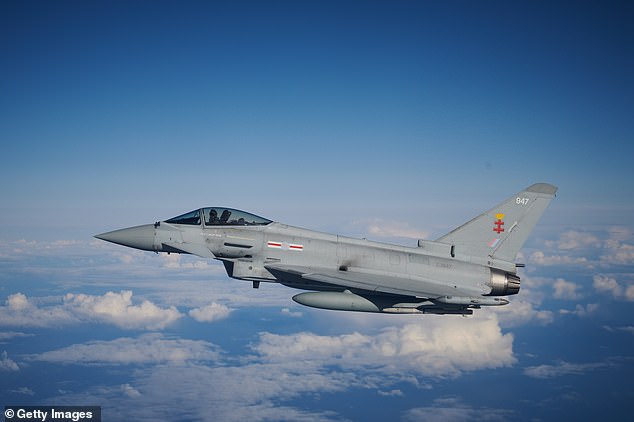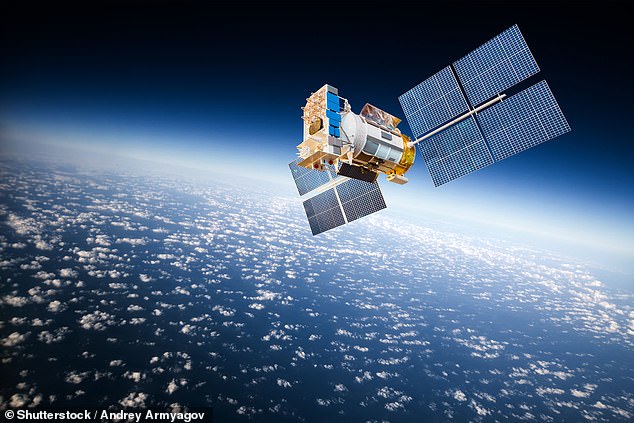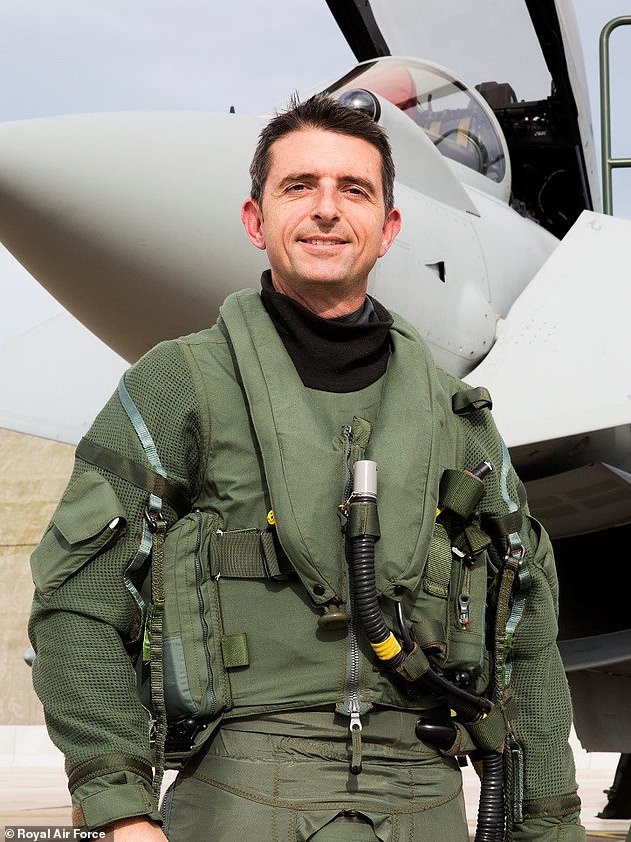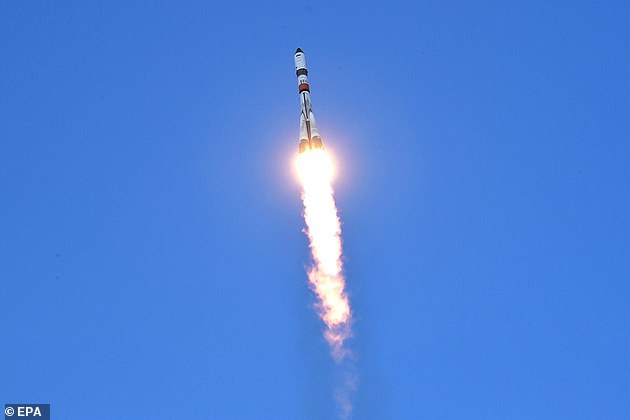Britain's new space force 'could deploy RAF Typhoon fighter jets to the "edge of space" to destroy Russian and Chinese military satellites'
Britain's new Space Command could deploy RAF fighter jets up to 60,000 feetSelected pilots will take part in training missions with aim of taking down Chinese and Russian military satellites during war
During war, the pilots would release anti-satellite missiles at enemy satellites
By RACHAEL BUNYAN FOR MAILONLINE
21 February 2021
Britain's new space force could be deploying RAF Typhoon fighter jets to the 'edge of space' in a bid to destroy enemy satellites in the near future, senior military sources have revealed.
Selected fighter pilots will take part in Space Command's training missions with the ultimate aim of taking down Chinese and Russian military, intelligence and communication satellites during wartime.
The specialist team will go through a string of simulated exercises before taking part in training flights where they would reach around 60,000 feet, RAF sources told the Sunday Express.
During a conflict, the pilots would then release anti-satellite (ASAT) missiles at enemy satellites before quickly returning to lower heights.

Britain's new space force could be deploying RAF Typhoon fighter jets to the 'edge of space' in a bid to destroy enemy satellites in the near future, senior military sources have revealed. Pictured: RAF Typhoon combat aircraft

Selected fighter pilots will take part in Space Command's training missions with the ultimate aim of taking down Chinese and Russian military, intelligence and communication satellites during wartime. (Pictured: file photo of a satellite)
The development comes two weeks after the Space Command announced their first commander as Air Commodore Paul Godfrey, 48.
He will carry the new rank of Air Vice Marshal when he takes the helm at Space Command.
Russia and China have already developed anti-satellite weapons, including ASAT missiles, with some being deployed.
RAF sources told the Sunday Express that it would be 'folly not to explore fully the capabilities required for satellite denial'.
While the UK does not have its own anti-satellite missiles, the US has SM-3 ASAT missiles, which could be placed under the wings of an RAF Typhoon.

Air Commodore Paul Godfrey will carry the new rank of Air Vice Marshal when he takes the helm at Space Command
Air Chief Marshal Sir Mike Wigston has previously warned that the UK's access to space is fundamental to national security and it would be 'negligent' if the UK failed to address the threats posed to satellites and their GPS navigation and communication capabilities.
He said: 'A future conflict may not start in space, but I am in no doubt it will transition very quickly to space, and it may even be won or lost in space.
'So we have to be ready to protect and if necessary defend our critical national interests in space.
'If we don't think and prepare today, we won't be ready when the time comes.'
Justin Bronk, research fellow at the RUSI think tank, told the Sunday newspaper: 'The benefits of having ASAT based on a ship or plane is that you can fire it from wherever you want.
'It doesn't take a Typhoon long to reach the equator.'
But if the UK acquired the SM-3 missiles from the US, they may cause a weight distribution issue as they must be fitted under the Typhoon's wings.
'It's not an insurmountable problem but it certainly makes sense to use Typhoon simulators - where Typhoons fly up to 40,000ft before pulling up to get a zoom climb to 60,000ft - in order to clear the asymmetry issues,' Bronk said.

The Russian Soyuz-2.1a carrier rocket with the Progress MS-15 cargo spacecraft lifting off from the launch pad at the Baikonur cosmodrome in Kazakhstan, 23 July 2020
Russia has conducting a series of tests with space-based anti-satellite weapons. Such weapons lead to increased debris and could potentially leave parts of space unusable.
Russia has already shown its capabilities when it comes to ASAT missiles launched from the ground and from space using a satellite.
In December last year, the United States Space Command said Russia conducted a test of a direct-assent ASAT missile, which by definition was launched from the ground.
'Russia publicly claims it is working to prevent the transformation of outer space into a battlefield, yet at the same time Moscow continues to weaponize space by developing and fielding on-orbit and ground-based capabilities that seek to exploit U.S. reliance on space-based systems,' the US Space Command said in a statement.
Russia has also potentially used its satellites for spying for both commercial and military purposes.
Last year the US confirmed China has ground-based missiles that can hit satellites moving in 'low Earth orbit'.
Britain's adversaries have also developed weapons such as lasers that could be used to damage satellites vital for tasks such as predicting the weather and carrying out disaster relief operations.
In one example a rocket was fired from Earth to orbit with the aim of destroying satellites. In 2007 China destroyed a weather satellite, creating more than 3000 pieces of debris.
SPACE WARS: NATIONS CONSIDER RULES TO GOVERN THE USE OF MILITARY WEAPONS IN SPACE
A group of more than 40 international experts are conducting a multi-year research project that will culminate in a Manual on International Law Applicable to Military Uses of Outer Space.MILAMOS Project is to ensure space activities are conducted in accordance with the rule of law.
This will involve a consideration of the existing international rules on outer space.
It will also involve integration with international humanitarian law and the rules prohibiting the use of force.
The drafting of the rules will involve many meetings, heated discussions and compromises.
It is envisaged that at the end of the project the applicable rules will be agreed on the basis of consensus.
The MILAMOS Project is not an effort to condone warfare in outer space.
On the contrary, it seeks to prevent armed conflict and minimise the devastating impact that space technology and military operations may have on the long-term and peaceful use of outer space.
The Outer Space Treaty, which was signed in 1967, was agreed through the United Nations, and today it remains as the 'constitution' of outer space.
The space treaty states that celestial territory is not subject to 'national appropriation' – in other words, no country can lay claim to them.
In the fifty years the treaty has existed, it has yet to be violated.
Britain's new space force 'could send RAF jets to "edge of space" to destroy military satellites' | Daily Mail Online


